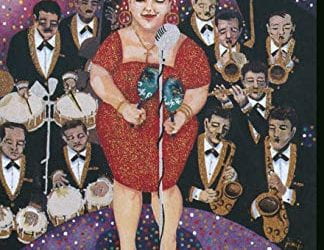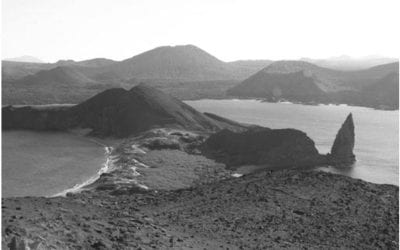Digitalizing Nature
Preserving the Past

ILLUSTRATIONS COURTESY OF THE ERNST MARY LIBRARY OF THE MUSEUM OF FALL 2004/WINTER 2005•ReVista 17 COMPARATIVE ZOOLOGY© PRESIDENT AND FELLOWS OF HARVARD COLLEGE
Art historians, biologists, anthropologists, historians of science, Latin Americanists and fish experts aren’t known for frequent intersections in their academic life.
They will soon find a meeting place—at least a virtual one—in Harvard’s Museum of Comparative Zoology’s (MCZ) ambitious new project of digitalizing material from an 1865 expedition to Brazil.
The digitalization project, expected to take about a year, will put specimens, specimen records, correspondence, field notes, diaries, sketches, photographs and monographs on line. However, what is even more unusual, the museum is digitalizing more than a thousand fish watercolors, pencil drawings and landscape paintings. Digital tools are increasingly being used to disseminate information about the flora and fauna of Latin America, but the MCZ project is particularly interdisciplinary.
When Louis Agassiz, MCZ founder and director, set off for Brazil with his wife Elizabeth and a dozen assistants on a 15-month collecting expedition, he took along museum artist Jacques Burkhardt. Although the first fixed photographic image in the world had been taken about twenty years earlier, painting and drawing were still the standard way of documenting science.
Agassiz hoped that investigating the distribution of Amazonian freshwater fish species in Brazil would help him refute Charles Darwin’s recently formed theory of evolution. The Thayer expedition, named after Boston banker Nathaniel Thayer, who financed the trip, did not prove what it set out to do, but it is still helping scientists-and other academics-to understand today’s world.
Connie Rinaldo, librarian at the MCZ Ernst Mayr Library, observes, “One of the major issues is that many of the fish have not been identified. These are very detailed images.. Burkhardt drew the animals as soon as they were dead, or a little before. It’s a rich collection of items that are difficult to access.”
The images will soon be posted to the Internet with links to collection data for, and photographs of, the existing specimens (preserved fishes) that still reside in MCZ basement, along with other links to scans of original field notes from the expedition. Some of the notes and letters are written by William James, who went along with Agassiz while a Harvard undergraduate (see related article, “The Nature of Tropical Nature”)
Robert Young, in the library’s Special Collections, has been cataloguing the images after conservation work is done at the Weissman Preservation Center and then sending them to Harvard’s Digital Imaging Group to be digitalized as part of Harvard’s Library Digital Initiative. The materials are entered into the database as thumbnail sketches, but will be available in higher resolution and size over the Internet to researchers applying for access. Previously, according to Rinaldo, the images could only be studied by coming to Cambridge or by a costly and risky process of sending them out to scientists. Demand from Brazil and other parts of Latin America, as well as from Europe, is consistent, she says.
Rinaldo hands the reporter a framed fish watercolor by Burkhardt. The intricate details of scales, eyes and fins are visible in intricate detail. Rinaldo smiles, “It’s a digital print. You couldn’t tell the difference, could you?”
Fall 2004/Winter 2005, Volume III, Number 1
June Carolyn Erlick is publications director at the David Rockefeller Center for Latin American Studies. She is also the author of Disappeared: A Journalist Silenced (Seal Press, 2004).
Related Articles
Editor’s Letter: Flora and Fauna
Ellen Schneider’s description of Sandinista leader Daniel Ortega in her provocative article on Nicaraguan democracy sent me scurrying to my oversized scrapbooks of newspaper articles. I wanted to show her that rather than being perceived as a caudillo
Bilingual Aesthetics: A New Sentimental Education
After an exhausting game of soccer with a crew of Mexico City street children, Vicente, a young teenager of 13 said, “Vamonos a la verga.” It was my third day with Casa Alianza, the international…
Nature and Citizenship
Two first-time visitors to the Galapagos archipelago begin their experience in exactly the same way. Two hours after departing mainland Ecuador, their plane descends towards the island of…




